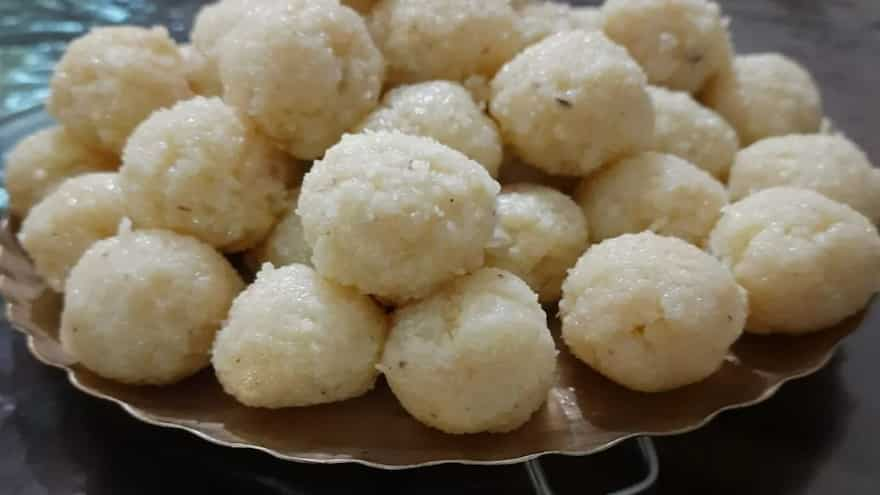After waiting a year for the Goddess Durga to come and bless us, she came, and the days passed quickly. On the tenth day or Dashami, after the immersion mantras are chanted, it's time to bid her farewell, and she goes with a promise to come back next year. In Bengali culture, this marks the beginning of a period called Subho Bijoya. Following Durga Puja, Bengalis embrace (kolakuli) family and friends with the gesture "Subho Bijoya." Youngers pay respects to elders with Bijoyar Pronam by touching their feet. Likewise, the elders extend Bijoyar aashirbad (blessings), and bhalobasha (love) to the younger ones. Nevertheless, until it is accompanied by a box of mishti or sweets, no Bijoya Pronam or Aashirbad is deemed acceptable. The concept of mishti mukh comes here as an essential element. It has different layers to its significance. Among all the Bengali sweets, Nakel Naru rules the rest!
Celebrating victory to bidding farewell on a sweet note
While a few believe that on the tenth day (Dashami), Durga slayed Mahishasura. Thus, sweets are devoured as a symbol of win of good over evil. The other story goes like this, since the Goddess Durga as a daughter, following her homecoming, starts her journey back on the 10th day, instead of sending her with a heavy heart, she is sent on a sweet note (mishti mukh). This term means greeting her with sweets on her forward journey. One sweet that takes the centre stage is narkel naru, or coconut laddoo.
As a therapy to get over the post-Puja despair
A few other advocates that, after Dashami, naru devouring is ritualised for another month. This humble sweet provides a calming, comforting impact that makes the Bengalis feel everything is fine in the world. It is a therapy for post-puja despair in the community.
Many believe that the reason behind this was an era when an abundance of coconut was available in Bengali households. Many gardens or courtyards used to be filled with a number of coconut trees. And the sweet needed only a few ingredients to prepare it. Plus, the shelf life of narkel naru is long. Thus, it has become a staple sweet for Subho Bijoya in Bengali culture.
Narkel Naru V/S Coconut Laddoo
Compared to the typical coconut laddoo made across the rest of the country, narkel naru is smaller in size. Likewise, it needs only minimal indigenous ingredients to prepare this Bengali sweet. Narkel naru can be divided into two categories. One is Chinir (Sugar) narkel naru and Gurer (jaggery) narkel naru.
Chinir Narkel Naru
Ingredients:
- 1 cup or 250 gram grated coconut, tightly packed
- 2/3 cup Sugar
- 3 tablespoons soft Khoya
- ¼ teaspoon green cardamom powder
- ½ teaspoon ghee

Chinir narkel naru, Image Source: kolkatafusion.com
Method:
- First, grate the coconut. Pour it into a pan and add the sugar. Ideally, for 1 cup tightly packed grated coconut, use 2/3 cup sugar.
- Following a thorough hand-mixing of the two ingredients, place the pan on the heat, keeping the flame low
- Once the sugar starts melting, add soft khoya
- Give them a thorough stir
- Cook the coconut mixture until it begins to separate from the pan. Make sure it is being cooked on a low to medium flame
- Once the coconut mix gets cooked evenly, add the cardamom powder and thoroughly combine it
- Switch off the gas. Immediately transfer the mixture to a different plate.
- Allow some heat to escape from the mixture.
- Put a little ghee on your palms.
- Take a small, almost lemon size amount of the warm mixture, shape it into a ball, and quickly smooth it between your palms.
- Repeat the entire procedure and mould the remaining mixture into narkel naru.
The delectable chinir narkel naru is ready!


